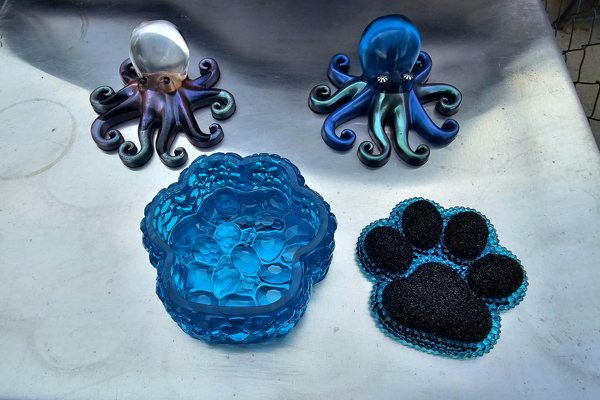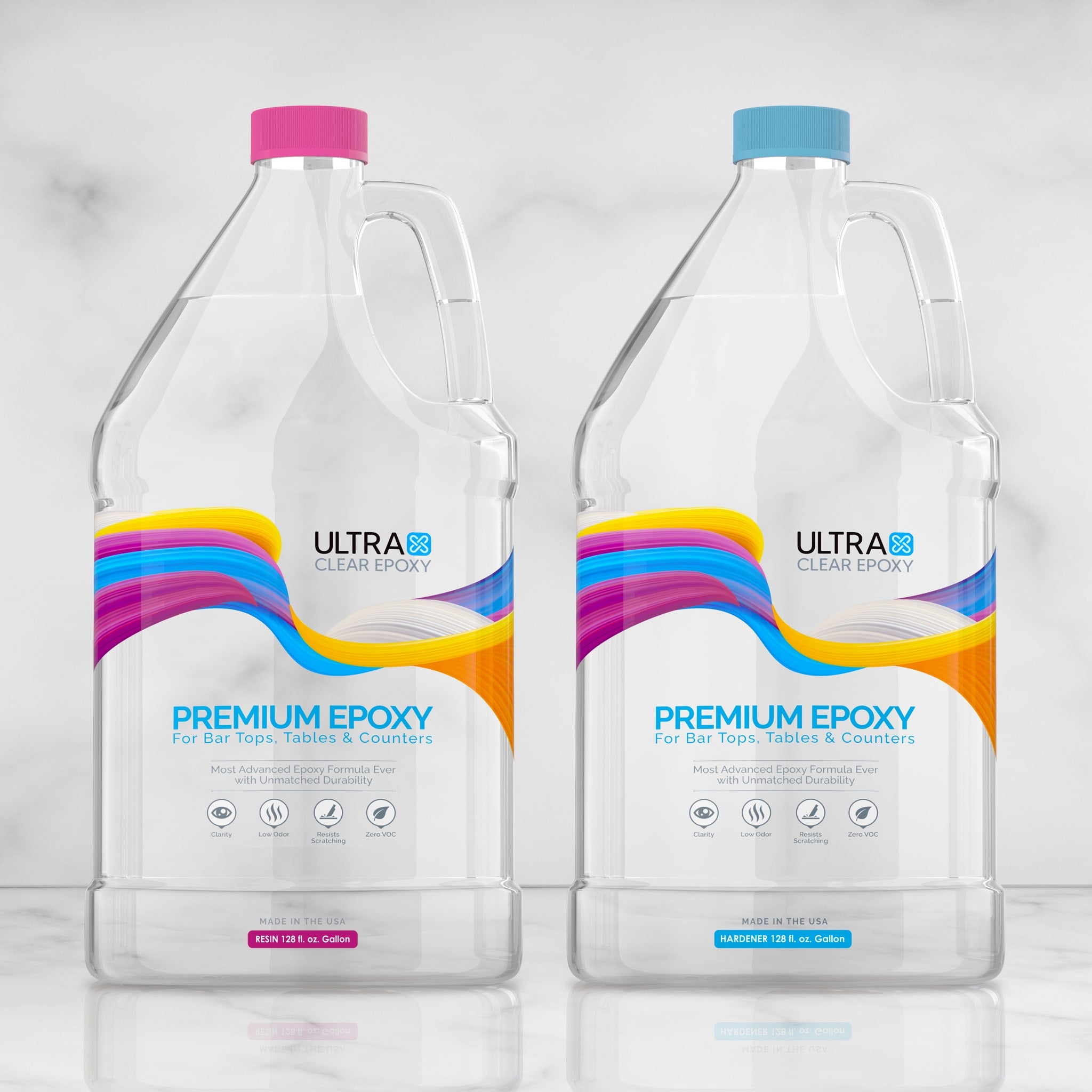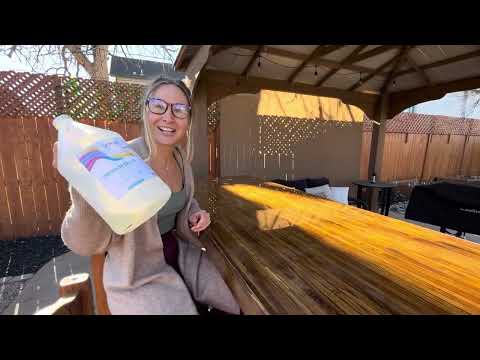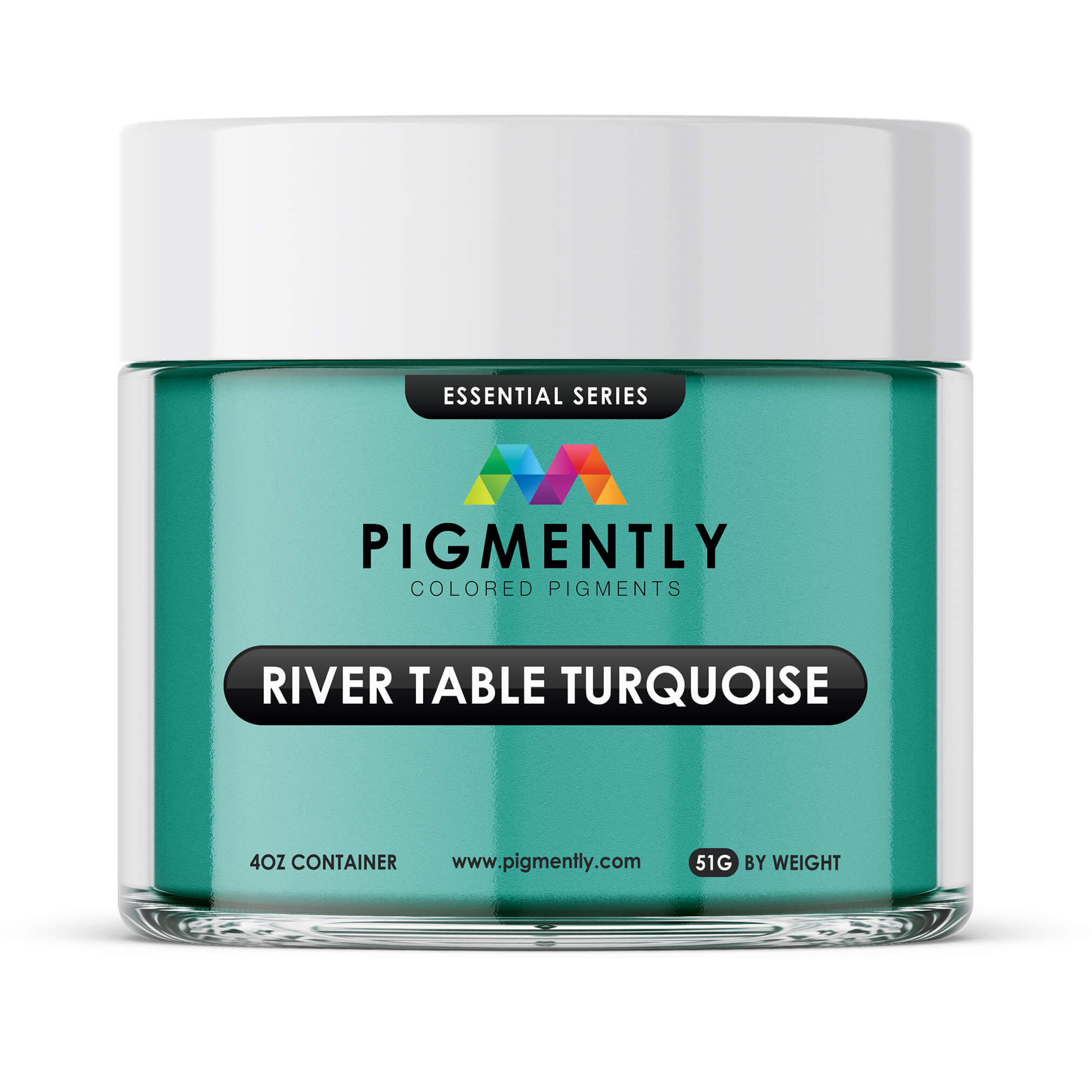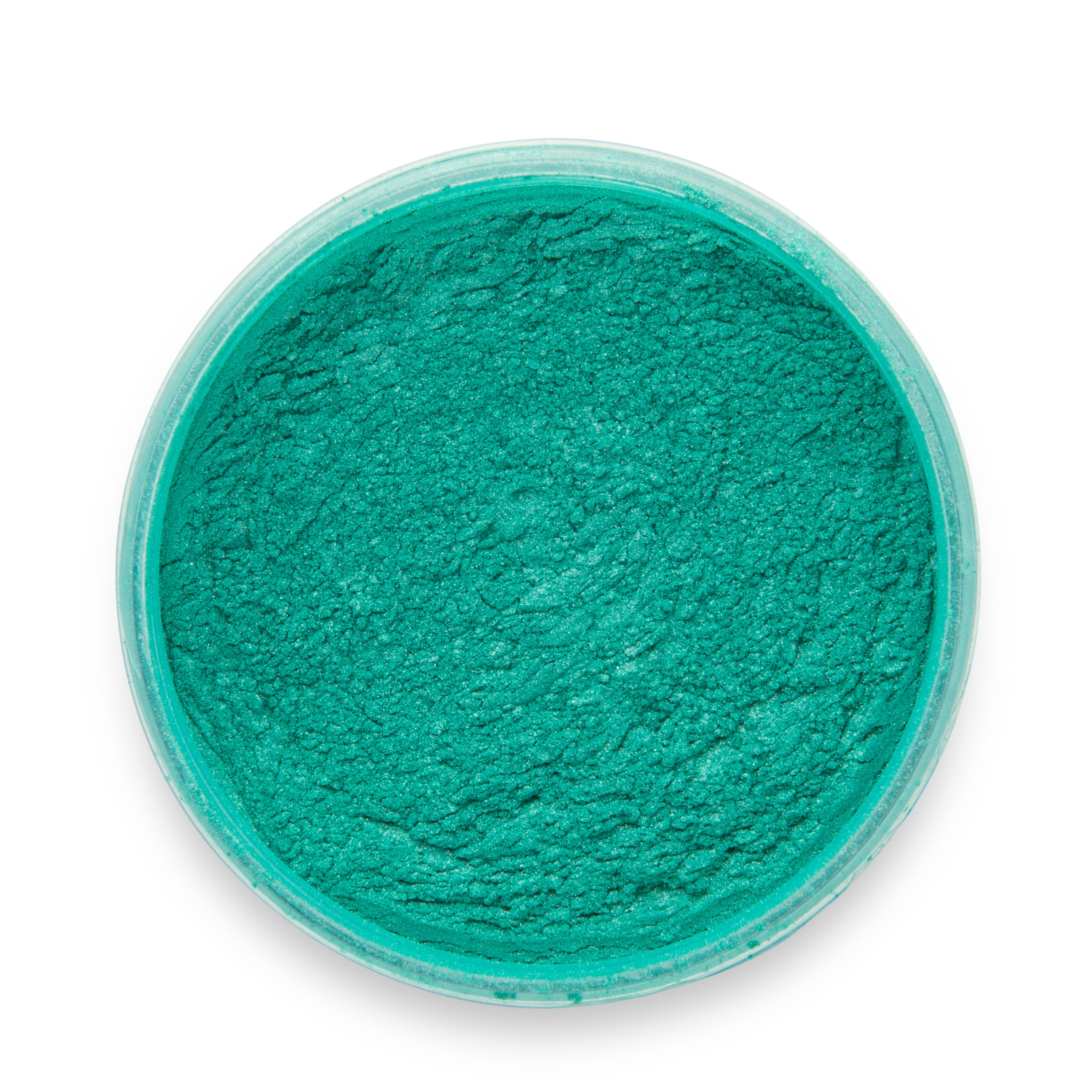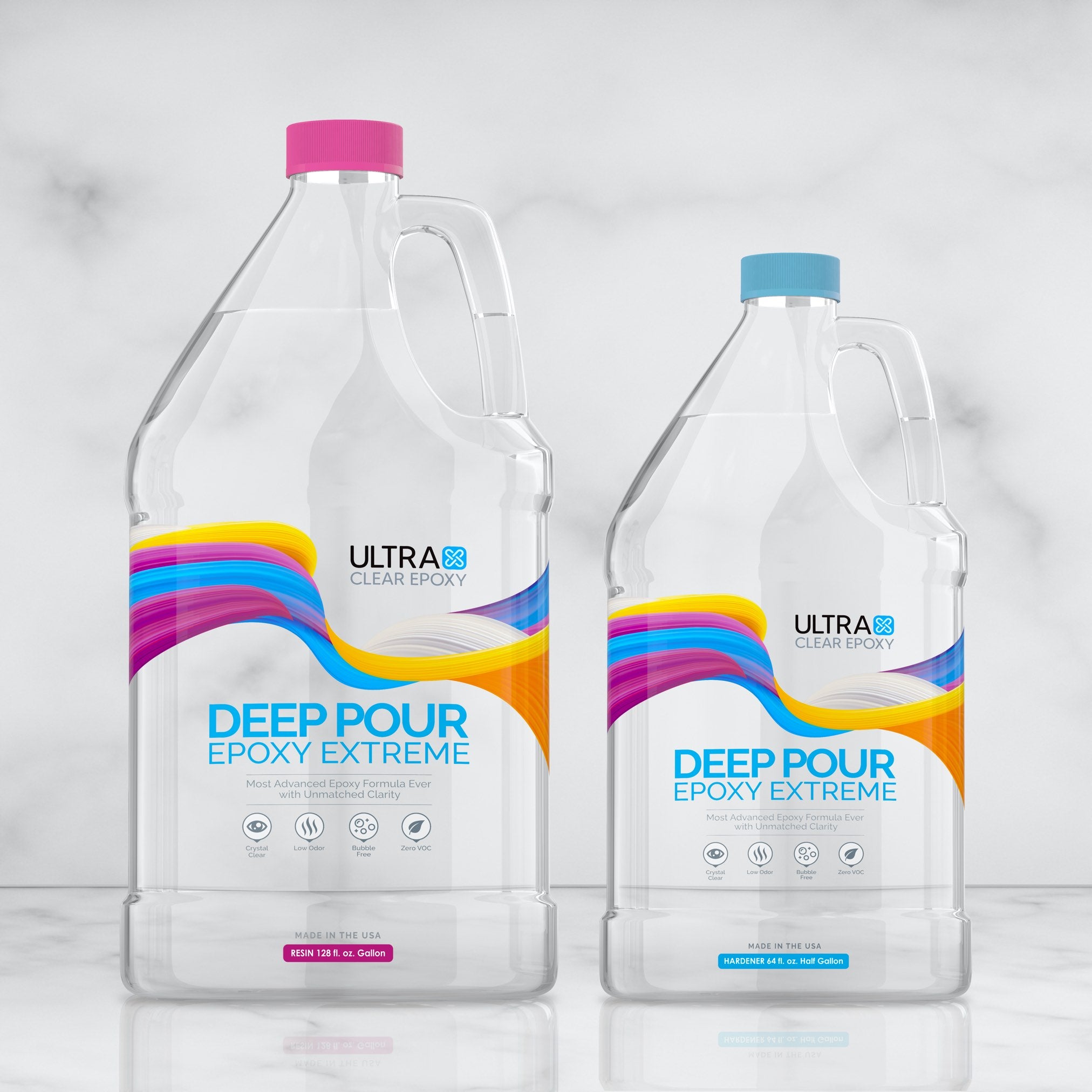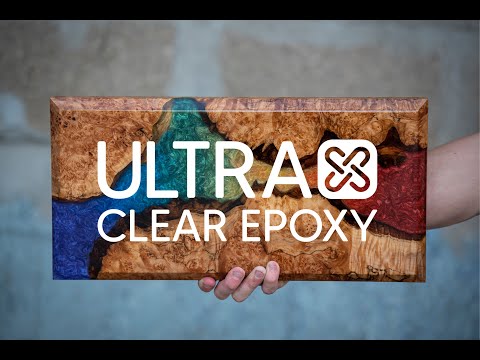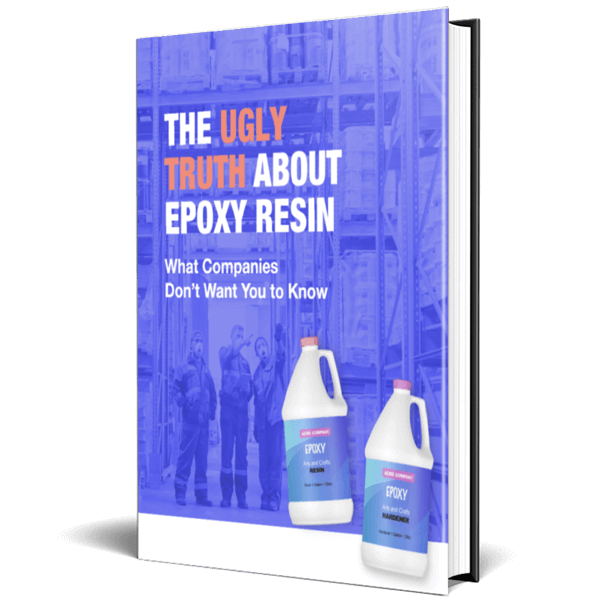Coloring your epoxy is a great way to personalize your resin creations. Because epoxy is so receptive to suitable colorants, it gives resin users a lot of control over customizing their work, whether it's a conventional finishing job or an artistic project (or both!).
But using colorants in epoxy isn't necessarily clear-cut in some situations, and we often receive questions about the types of colorants or epoxy to use, various creative techniques to employ them, and a variety of other topics, such as how or when to use them.
In this article, we'll answer a selection of the most common questions we've received about using epoxy colorants (e.g., pigments and dyes).

#1: What types of colorants can I use with epoxy?
You can use a variety of colorants with epoxy, including:
- Pigments: These are finely ground powders, such as mica powders, that provide opaque or translucent colors to the resin. Mica powders often give a shimmering or metallic effect.
- Dyes: Dyes are liquid colorants that dissolve in epoxy, producing translucent or transparent colors. They are great for evenly achieving more vivid and deeper hues.
- Alcohol Inks: Alcohol-based inks are highly concentrated liquid colorants that can produce vibrant, rich colors and create special effects such as swirling and cell patterns.
- Acrylic Paints: Some users experiment with acrylic paints. Very small amounts can be mixed into epoxy to provide color, but it’s essential to use them sparingly, as they can thwart the epoxy’s curing process.
- Glitters and Metallic Flakes: These are added to epoxy to create a sparkling or reflective finish. They don’t change the color of the resin directly, but the added visual texture and shine they provide can affect the project's overall appearance in colorful ways.
You can find a variety of high-quality pigments and dyes in our store here:
#2: What’s the difference between pigments and dyes in epoxy?
The primary difference between pigments and dyes is in their appearance and transparency:
- Pigments: Pigments are solid colorants (often in powder form) that create opaque or semi-opaque colors. They tend to give epoxy a more solid, vibrant finish and are better for covering larger areas or creating a solid color effect.
- Dyes: Dyes are liquid and usually more translucent or transparent. They dissolve in the epoxy and are ideal for achieving vibrant colors with a see-through or watery look. Dyes are often used for effects like ocean-inspired tables or abstract artwork where the wood grain or other elements need to show through.
#3: Can I mix epoxy pigments with each other to create custom colors?
Yes, you can mix different pigments together to create custom colors. Pigments are highly versatile, and mixing them in small amounts can allow you to experiment with shades and tones to achieve your desired color. Just be sure to mix the pigments thoroughly to prevent uneven coloring or streaks.
#4: Can I use food coloring in epoxy?
Generally, no. We suggest avoiding using food coloring in epoxy. While it may work in small amounts, food coloring is typically water-based and can affect the curing process of the epoxy, leading to poor adhesion or incomplete curing.
It’s best to stick with colorants specifically designed for use with epoxy, such as epoxy dyes or mica powders.
#5: How do I mix pigments or dyes into epoxy?
To mix colorants into epoxy, follow these steps:
- Measure and Mix Epoxy: First, mix your resin and hardener according to the manufacturer’s instructions. A high-quality epoxy will be more receptive to the colorants.
- Add Colorant: Once the epoxy is mixed, gradually add your pigment, dye, or other colorants. Start with a small amount and mix thoroughly to ensure even distribution.
- Test the Color: If you're working on a large project, we suggest testing the color on a small area or scrap piece to make sure you’re satisfied with the result.
- Mix Well: For pigments, mix until you have a uniform color throughout. For dyes, make sure they dissolve completely into the resin.
#6: Can I use metallic flakes or glitter in epoxy?
Yes, metallic flakes and glitter can be added to epoxy to create a sparkling, reflective, or iridescent effect. These colorants don’t change the overall color of the resin but instead enhance its visual texture. When adding glitter or metallic flakes, ensure that you mix them evenly into the epoxy to avoid clumps or uneven distribution.
#7: How much colorant should I add to my epoxy?
The amount of colorant you add depends on the type of effect you want to achieve:
- Pigments: A small amount (typically 1-2 teaspoons per 8 ounces of mixed epoxy) will provide vibrant color. More pigment can be added for a deeper shade.
- Dyes: Dyes are highly concentrated, so a few drops are usually enough for a vibrant color. For subtle effects, start with 1-2 drops and test the result.
- Glitters and Flakes: The amount depends on the sparkle effect you want. For a light shimmer, use about 1 teaspoon of glitter per 8 ounces of epoxy. For a heavier, more sparkly effect, you can add more.
You can play it safe by starting with a small amount of any colorant, then adding more until it reaches your desired look.
#8: Can I use multiple colors in a single epoxy pour?
Yes, you can use multiple colors in a single pour. In fact, techniques like color layering, swirling, or marbling can be used to create beautiful effects.
Pour each color separately, allowing the colors to mix slightly or remain distinct depending on the technique you’re using. You can also use different tools, like a heat gun, to manipulate the colors into a more blended or flowing design.
Learn about different coloring techniques in our guide to the subject!
#9: How do I get a “cell” effect with epoxy?
To create a cell effect, mix alcohol inks or pigment pastes into the epoxy and then add a small amount of silicone oil (just a few drops). When you pour the epoxy and apply heat (using a heat gun or torch), the silicone will react with the epoxy and create circular patterns, or “cells,” that give the surface a unique, textured look. This technique is often used in abstract art and resin geodes.
#10: Can I add glitter to epoxy without affecting the curing process?
Yes, glitter and other non-opaque materials like metallic flakes can be added to epoxy without affecting the curing process, as long as the glitter is fine and mixed evenly into the resin.
Larger, thicker materials could potentially interfere with the cure, so it’s important to add glitter sparingly and ensure it’s well-distributed throughout the epoxy to avoid creating air pockets.
#11: Can I use colorants on a wood surface with epoxy?
Yes, colorants like pigments and dyes can be used with epoxy on wood surfaces. For projects like river tables, you can add vibrant colors or achieve a translucent effect by using a combination of colorants. If you're using colorants on wood, it’s a good idea to seal the wood first to prevent the resin from soaking in and to push air out of the pores. This will ensure an even and consistent finish.
#12: How can I prevent epoxy from turning yellow after it's cured?
To prevent yellowing, use UV-resistant epoxy products or apply a UV-resistant topcoat over the cured epoxy. Some pigments, such as those with high UV stability, can also help maintain the clarity and vibrancy of the resin. Avoid exposing your epoxy projects to direct sunlight for extended periods, as UV light is the main cause of yellowing.
Have questions? Want advice? Contact us!
If you have any questions about using colorants with epoxy resin, or if you'd like assistance in planning an epoxy project, please reach out to us at UltraClear Epoxy—our epoxy experts are ready to assist!
You can contact us via phone or email here. During business hours, you can also text chat online with one of our resin specialists by clicking the Help button at the bottom of your screen.
In our online store, you'll find a variety of useful tools and supplies, ideal for resin projects, plus our award-winning UltraClear Bar & Table Top Epoxy and our UltraClear Deep Pour Epoxy.

